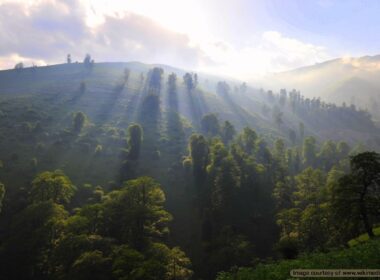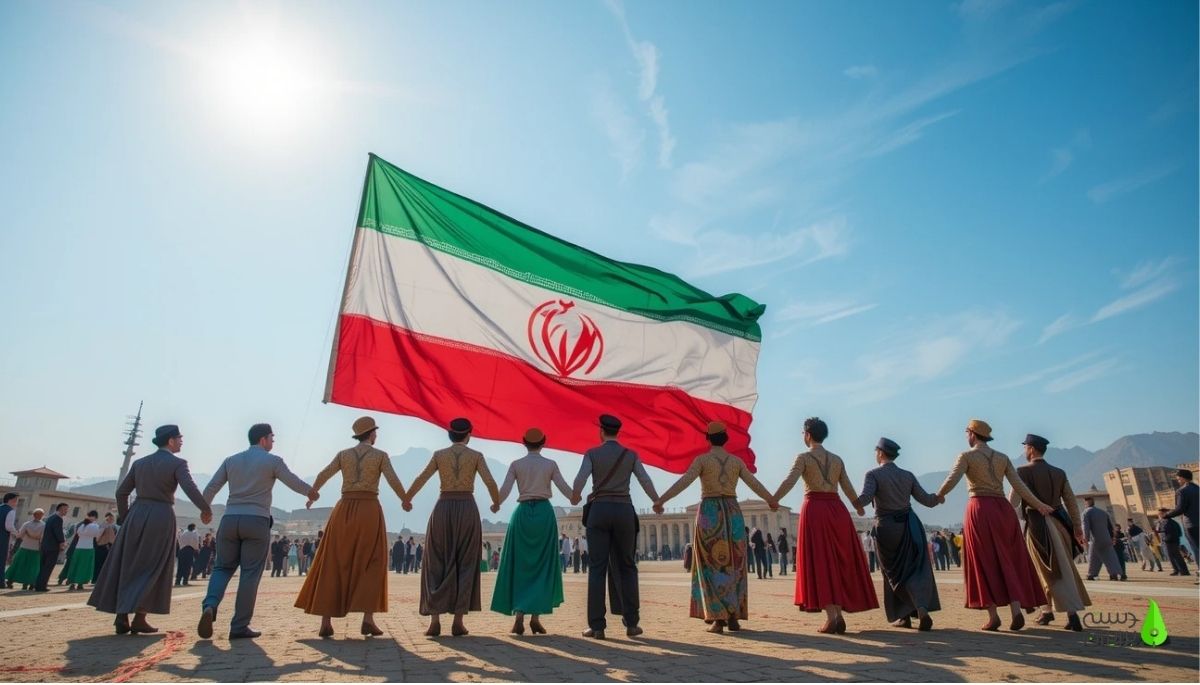
It is said that the history of miniature art in Iran starts with Mani. The art of miniature in Iran is an intangible cultural heritage of Iran, which has been inscribed in the UNESCO List. We recognize Mani as the pioneer of this style of painting because of his 3 A.D. illustrations of miniature figures and designs. Mani declared himself a prophet during the Sassanian era and presented an illustrated book called Arjang.
He had a unique style of painting, which was characterized by extremely detailed figures and designs. There is no trace of this art style in any art form for a long time after Mani’s works. According to written evidence, during the early Islamic era and after the collapse of the Sasanian empire, the influences of Sasanian art styles are visible in paintings of the 7th to 12th century AD. Of course, even though narrow-minded caliphs had forbidden the depiction of human bodies, the influences of Middle Asian motifs and concepts are undeniable.
The Art of Miniature in Iran; Seljuk Era Paintings
The miniature works of the Seljuk period exhibit a unity of perspective and pattern. At that time, the visual representation was so powerful that it began to spread beyond the geographical borders and into the nations ruled by the Seljuk Empire. This style had two main features:
- Full round faces with small mouths and slanted eyes, and
- A completely refined style in figurines, vegetation, animals, and natural landscapes.
The Art of Miniature in Iran; Ilkhanid Paintings
After the devastating Mongol invasion of Iran, the Ilkhanids’ court in the northwest of Iran gradually began to promote traditional artistic and cultural conventions. In the extent of this period, many academic texts and illustrated manuscripts were created in the fields of zoology, botany, and history. Various art styles emerged in Baghdad, Tabriz, and other cities that showed to connection to Seljuk art styles. Therefore, the Art of Miniature in Iran evolved enormously during this period.
The Art of Miniature in Iran; Jalayirid Paintings
After the Ilkhanid era, the Jalayirid Sultanate managed to promote miniature art in Tabriz and Baghdad (the two capitals of Jalayirid) and also in Shiraz and other Iranian cities. The style of painting in each of these cities was different from the style in other cities.
The Art of Miniature in Iran; Muzaffarids Dynasty
The Mozafarids dynasty, which ruled parts of modern Iraq and what is now the Fars province of Iran developed new styles.
Therefore, during the time period after the collapse of the Seljuk empire until the invasion of the Timurid empire, the art of miniature expanded and developed, and many independent schools of miniature art such as the Tabriz, Baghdad, Shiraz, and the Mozafarian school emerged. Many stories and poems from ancient Persia, which included the works of prominent authors such as Ferdowsi, Nizami, Hafez, Saadi, Jami, etc., were illustrated in the form of manuscripts and pictures in addition to art books.
History of Miniature Paintings in the Timurid Period
As a result of the Timurid invasion, the northeast of Iran became the political and artistic center of the country. Samarkand and Khorasan attracted many artists. One of the most distinct styles that emerged during that period was a combination of the Jalairian and Mozafarian schools of miniature art, whose elements and details seemed to depict the traditions of Central Asia.
During the three-and-a-half centuries after that period, there were only a few new styles that were either founded or merged with earlier styles. For the next century and a half, Herat was the center where the Herat School of Miniature Art was founded. All the calligraphers, gold blockers, miniaturists, and clerks of Baysunghur court were transferred to Herat. They created some of the most commendable illustrated manuscripts in the history of Oriental artwork. Their miniature works were created with an absolute balance in scale, selection, and composition of color.

Baysunghur Shahnameh is a unique and outstanding masterpiece in the history of miniature art in Iran, which was illustrated in this period. The Timurid king, Shahrukh, and his sons were patrons of miniature art. Because of their interest in promoting arts, Miniature flourished in Herat, Shiraz, Baghdad, Tabriz, Samarkand, and many other regions.
The Timurid Court Style laid a solid foundation for the next 150 years, which was used not only by Iranian Turkmen artists but also by Safavid and Ottoman miniature artists. Near the end of the Timurid period, when Sultan Hossein conquered Herat, he ordered the gathering of a new illustrated manuscript of “Zafarnameh”. Most of the miniature paintings in that manuscript were created by the most famous Iranian miniaturist, Kamāl ud-Dīn Behzād. Kamal ud-Din Behzad and his contemporary artists were able to refine and perfect the now-classic Timurid miniature style.
Behzad observed the classical school of Herat to paint his best works of miniature art. Later, he chose the Bukhara style to recreate previously illustrated manuscripts. The Bukhara school was not recognized as a new innovative school, but professional miniature artists created a world of colors and depicted spectacular scenes. During that period, Qazvin, Isfahan, Shiraz, and Tabriz were still centers of miniature art.
Miniature Art in the Safavid Period

The art of miniature in Iran flourished a lot during this period. Ismail I, the founder of the Safavid dynasty, appointed Behzad to the position of director of the royal library in Tabriz. During the reign of the next king, considerable works of art were created there. A breathtaking version of the Shahnameh with 250 large-scale miniature paintings was illustrated creating The Shahnameh of Shah Tahmasp. later Tahmasp gave up his pursuit of art by choosing an ascetic life. Many miniature artists migrated to other countries, especially to India. Mashhad and Qazvin became new centers supporting miniature art. Shah Ismail II supported miniature art slightly more than Tahmasp. An illustrated manuscript of the Shahnameh was completed during his reign, which contained 50 miniatures following the standard art style of his court.
According to the historical findings, there were no major developments in the history of the Art of Miniature in Iran until the rise of Shah Abbas I, when many miniature works and wall paintings from previous eras were restored by his order. Miniatures were also used in the decoration of several Safavid palaces in the capital, Isfahan. In general, people also spent more money on artwork. Although they were presumably not much richer than in previous periods.
Finally, this resulted in the first substantial connection between text and imagery in classical Iranian painting. Khorasan became the second important center of high-quality miniature paintings, which were spread across the pages of manuscripts. The miniature artwork of the Safavid palaces in Qazvin and Isfahan was, in general, inspired by the personal style of the most famous artist of that period, Reza Abbasi.
During his time, it became customary to undersign works of art. The king at that time welcomed the influence of Indian and European art in Iranian art and this caused his artistic preference to change when ordering new artworks. There are many debates on whether Iranian art has evolved under such an influence or not.
The history of the evolution of Iranian miniature art ends with the Safavid period, a bitter end to the evolution of Iranian miniature art. Western styles began to blossom and Iranian painting entered a new era. Iranian miniature style is still practiced, but it has lost its popularity as the only Iranian style of painting.
In 2020, UNESCO recognized this Iranian art and the skills of creating its works as part of the intangible cultural heritage of Iran. The countries of Azerbaijan, Turkey, and Uzbekistan have also played a role in documenting this art and its global recognition along with Iran. Therefore, this art is globally recognized in the name of the mentioned countries.
Frequently Asked Questions About the Art of Miniature in Iran
If you cannot find the answer to your question here, leave us a comment in the comment section below this post and ask your question. We will definitely answer it.
What is miniature art?
Miniature art is a style of painting specific to the Orient. This style of painting is famous for its delicate depictions and attention to detail.
In which country did miniature art originate?
Miniature is actually an Iranian painting style before the introduction of Islam in Iran. After the advent of Islam, this style was adopted by mysticism and Islamic thoughts and diverged into different branches in terms of artistic style and context. Today, we know them as schools of Isfahan, Herat, Shiraz, etc.
What are the supplies needed to create miniature art?
In this art, like other fields of painting, supplies such as paint, brush, canvas, etc. are needed.
In what period did miniature art become popular?
Iranian miniature art flourished and had ups and downs in different periods before Islam. During the Abbasian period, this art like other arts was forbidden and considered haram.
In the 11th century AD, this art found popularity again, and the Ilkhanid period saw the peak of the popularity of miniature art. Various schools were formed during that period which had unique markers.
Who is the most prominent contemporary Iranian miniaturist?
Mahmoud Farshchian is the most prominent contemporary Iranian miniaturist. His works have been displayed in many exhibitions in different countries. The significance of Farshchian’s paintings is in adhering to the classical miniature style while using new techniques.













